Vimar Coaxial cables


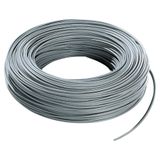
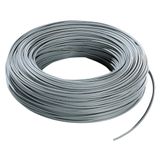
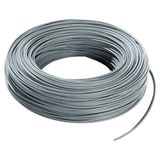
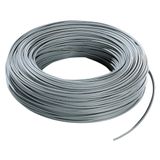

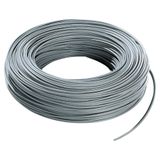
Installers stick with Vimar when they want consistent jacket ODs, repeatable screening, and connectors that actually fit first time. The coax family below maps cleanly to TV, satellite, and RF backbones, with CPR classes and bend radii that match Vimar trunking and plates.
vimar coaxial cables assortment and CPR classes
Bulk reels cover 75 Ω indoor PVC and LSZH jackets (CPR Eca…Cca-s1,d1,a1), tri- and quad-shield builds, and sweep testing to 3 GHz for DVB-T2/DVB-C/DVB-S/S2/S2X. Solid Cu or CCS conductors are available; foamed PE dielectrics hold velocity of propagation around 0.82. Teams order vimar coaxial cables by jacket (PVC/LSZH), shielding class (A/A+/A++ per EN 50117), and OD to keep device plates and glands consistent across floors.
vimar rg6 coax cables technical parameters and attenuation grid
RG6 (Ø ~6.8–7.0 mm) is the site workhorse: attenuation ~5.6 dB/100 m @ 100 MHz, ~12 dB @ 500 MHz, ~18–20 dB @ 1 GHz, ~27–30 dB @ 2 GHz depending on shield class. Return loss targets ≥ 18–20 dB to 1 GHz; screening effectiveness ≥ 95 dB (Class A) with quad-shield options pushing > 105 dB (A+). Crews specify vimar rg6 coax cables with printed metre marks, DoP IDs, and drum lengths sized to riser pulls so splices land in accessible boxes.
vimar tv antenna cables distribution and splitters
For terrestrial TV/FM/DAB backbones, Class A screened runs keep LTE/5G out of the band. Maintain ≤ 60 % pathway fill, distance from VFD trays, and use matched taps/splitters to hold port-to-port isolation. When drawings call up vimar tv antenna cables, we match OD to Vimar keystone-style TV modules and IEC adapters so wall plates sit flush and shielding continuity is maintained.
vimar satellite coax wiring LNB power and DiSEqC
Satellite trunks ride 950–2150 MHz with 13/18 V LNB power and 22 kHz/DiSEqC signaling. DC loop resistance must stay low; connectors need full-circumference contact to avoid voltage sag at multi-switches. Projects that document vimar satellite coax wiring up front choose quad-shield A+ for dense risers and publish max run lengths vs multiswitch gain so margin survives tree splits.
vimar rf signal cables control, IF, and head-end links
Head-ends often mix IF, return paths, and control lines. Specify Class A++ where high-level RF shares trays with LED drivers or drives. Terminate with 360° braid/foil capture and use torque-rated nuts to stop micro-arcing. With vimar rf signal cables, we map screening class and connector style per rack bay to keep cross-mod and ingress below threshold on audit day.
vimar coax connectors compression, crimp, and IEC forms
F-type compression for RG6 is the default in risers; IEC male/female front modules finish at the plate; right-angle forms clear shallow back boxes. Gold-flash center pins help in corrosive or coastal sites. Stock vimar coax connectors by cable OD, tool family (compression/crimp), and finish (nickel/tin) so terminations pass pull and waterproofing tests first time.
vimar communication cables hybrid pulls and device plates
Mixed routes often carry coax beside data and control. Use multi-compartment trunking and maintain divider height; bond shields 360° at entry plates and single-end only for low-level analog. Schedules that bundle vimar communication cables with coax list bend guides, gland threads, and labeling, so riser crews don’t improvise mid-shift.
Product range and series overview
- Bulk coax: RG6 PVC/LSZH, tri/quad-shield, solid Cu or CCS, sweep to 3 GHz, Class A/A+/A++.
- Accessories: splitters/taps (5–1000/2150 MHz), LTE-filter modules, termination loads, earth blocks.
- Outlets: Vimar TV/SAT modules (IEC/F), single/dual, matched to Eikon/Arké/Plana plates.
- Hardware: compression tools, prep knives, torque wrenches, 360° shield clamps for gland plates.
Technical specifications and checks that matter
Impedance 75 Ω; screening per EN 50117; CPR per EN 50575 with DoP; flame/smoke: IEC 60332/60754/61034 for LSZH; operating −20…+70 °C; bend radius ≥ 7×OD installed (≥ 10×OD during pull); pull tension per datasheet. Earth the coax network at the head-end with surge paths documented; keep 200–300 mm separation from power unless segregated.
Applications and compatibility
Hotels, MURB, and hospitals: dual TV/SAT plates in rooms, LSZH in escape routes, quad-shield in dense risers. Retail and arenas: long RG6 trunks to head-ends with Class A+ screening near lighting gear. All parts align with Vimar conduits, trunking, and device plates, so the trim line stays uniform.
Selection criteria for B2B buyers
- Fix service (TV/FM/DAB vs SAT IF) and cascade plan, then pick shielding class A/A+/A++.
- Choose jacket (PVC or LSZH) and CPR class by route; lock OD vs device plate and gland size.
- Calculate lengths vs tap values and multiswitch gain; reserve margin for connectors and bends.
Standardize connector type (compression F, IEC) and the tool kit; publish torque and strip lengths. - Document bonding and LTE filtering at head-ends; label both ends with rack/plate IDs.
Advantages of working with Bankoflamps
Your rollout cadence sets procurement. Expect job-specific pricing, near-hour quotes by EAN/MPN, and live EU stock before pulls begin. The portal shows lead times, shipment tracking, and downloadable price lists with validity windows you can plan against. Trusted clients use post-payment up to 30 days. We consolidate partials so reels, taps/splitters, outlets, connectors, clamps, and labels arrive route-bundled by riser. Your account manager cross-checks screening class, CPR, OD/connector match, LTE-filtering, torque notes, and labeling against your drawings—keeping deliveries site-ready across France, the Baltics, Germany, Spain, Italy, Belgium, and the Netherlands.